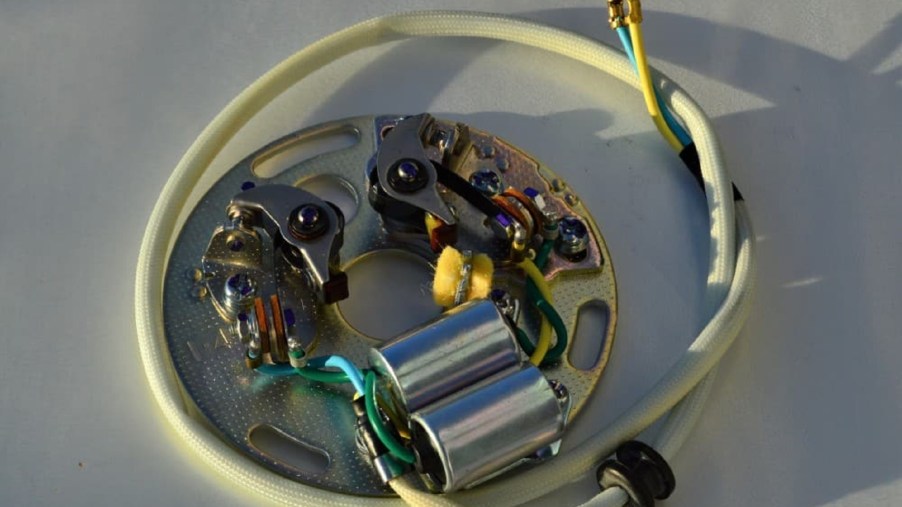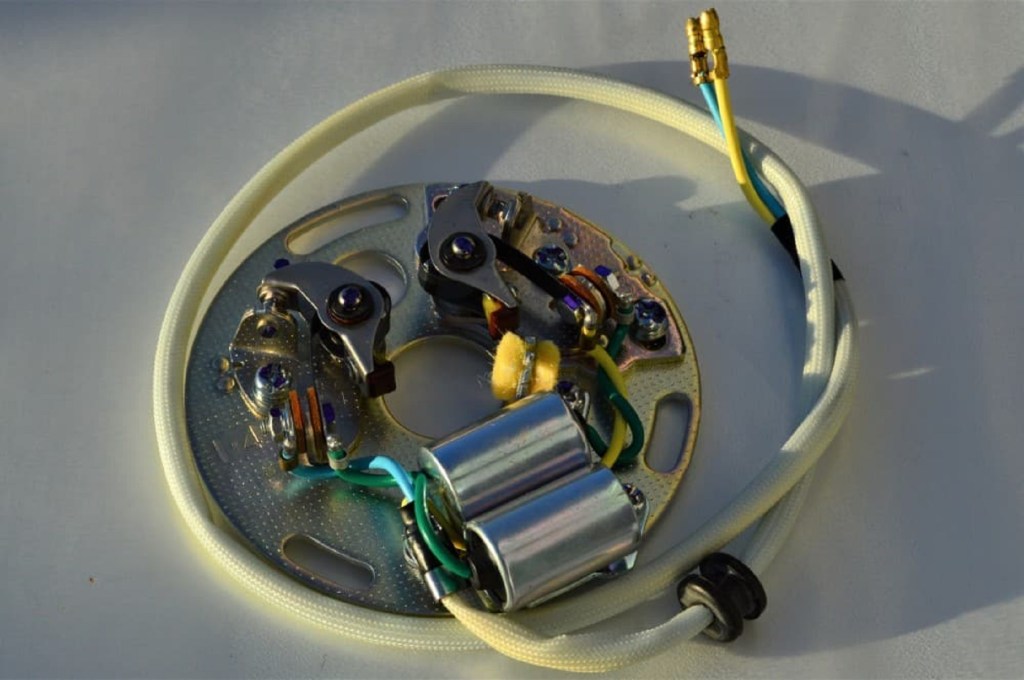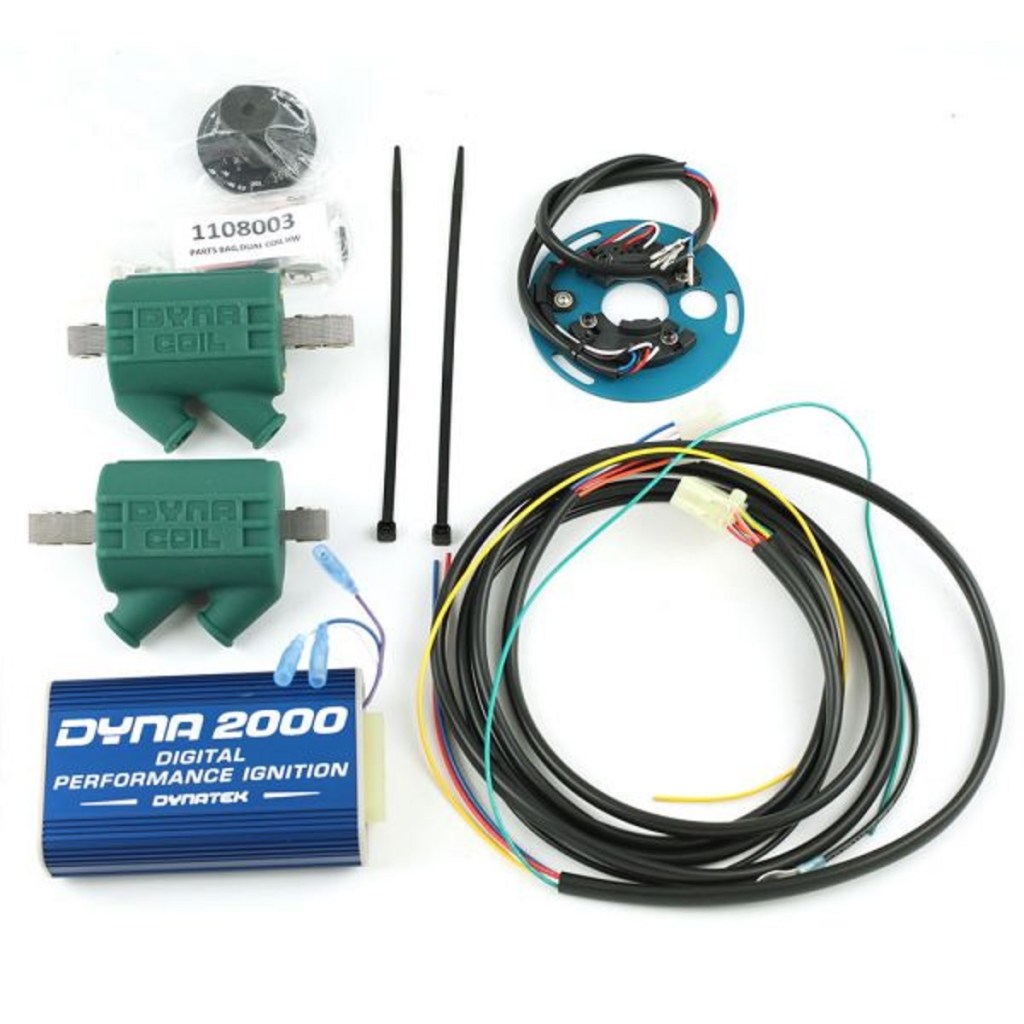
Classic Motorcycle Ignition Systems Are Simpler Yet More Complicated
For those looking to start riding a classic motorcycle, know that it comes with some unique, and more frequent, maintenance needs. These bikes have manually-adjusting carburetors, for example, and shorter overall service intervals. Plus, those used to modern computerized ignition systems might be overwhelmed when it comes time to fixing a classic motorcycle’s system. But as complicated as they may seem, they’re arguably more straightforward to service.
Classic motorcycle ignition systems do the same job with more disparate parts
At a basic level, classic and modern motorcycle ignition systems work broadly the same way. They send power from the battery to the spark plugs via the ignition coil(s) so the air/fuel mixture ignites, Cycle World explains. And once the engine’s running, it can recharge the battery via the generator/alternator, UTI and RevZilla explain. However, compared to modern electronic ignition systems, classic ones have more, and more separated, parts.
The earliest motorcycles didn’t even have batteries, RevZilla reports. That’s because their electrical demands were limited almost purely to their spark plugs. So instead of a battery, the first motorcycle ignition systems had magnetos linked to kickstarters to generate current, Cycle World explains. And even after batteries became commonplace, magnetos existed alongside them, Hemmings reports. That way, even if the battery failed, you could still start the bike and ride home.

The magneto system was replaced by the breaker-point ignition system, Champion Autoparts reports. If you’ve ever heard someone talk about motorcycle ‘points,’ they’re referring to a part of this system. It works by connecting the battery to a singular ignition coil; the current creates a magnetic field. This ignition coil is connected to a distributor, which houses a condenser (a charge-holding capacitor) and some contact breakers. These breakers are the ‘points,’ Cycle World explains.
During starting or normal running, the engine’s rotation also rotates a cam in the distributor. This opens and closes the points. When the points open, it collapses the magnetic field in the ignition coil and creates a large current. This current flows through the distributor and into the connected spark plugs. And the condenser prevents the initial interrupted current from arcing across the points and ruining them, Motorcycle Forum explains.
A classic motorcycle ignition system can often be repaired by hand—and has to be
Over time, motorcycle ignition systems were simplified by swapping mechanical components for electronic ones.
CDI systems, for example, swap the mechanical points for transistors, RevZilla and NADAGuides explain. However, still rely on a single ignition coil and distributor. But the latest electronic ignition systems don’t have a distributor at all. Instead, timing wheels send signals for the current to flow, Popular Mechanics explains. And instead of one ignition coil for the whole engine, it’s one ignition coil per spark plug, Hagerty reports.
Modern engineering makes these compact and efficient ignition systems possible. And motorcycle tune-ups no longer include cleaning points and adjusting ignition timing, Cycle World explains. Plus, spark plugs last significantly longer without issue. However, the streamlining of motorcycle ignition systems has its downsides.
For CDI-equipped bikes, if the ‘black box’ fails, you have to get a new one, Motorcyclist reports. It’s a similar story with distributor-less systems. That’s a problem if you’re, say, off-roading in the forest.
Admittedly, a total failure like that is fairly rare. But it’s one reason why classic motorcycles, with fully-mechanical ignition systems, have their proponents. You can adjust points with hand tools, a multimeter, and a bit of patience, J&P Cycles reports. And if absolutely necessary, you can briefly ride a bike with a failed condenser, Cycle World reports.
Should you swap the vintage setup for a modern one?
As we noted earlier, the downside of many classic motorcycles is their shorter service intervals. And that includes their ignition systems. As a result, some riders swap out their vintage systems for modern electronic ones. There are even kits available for a variety of old models, DimeCityCycles reports.

If you’re planning on regularly riding your vintage wheels, it’s an upgrade worth considering. The newer systems make it easier to start and run the bike, and maintenance needs are significantly lower. But if you don’t mind getting your hands dirty, and want to preserve your motorcycle’s originality, the old systems can still throw sparks.
Follow more updates from MotorBiscuit on our Facebook page.


